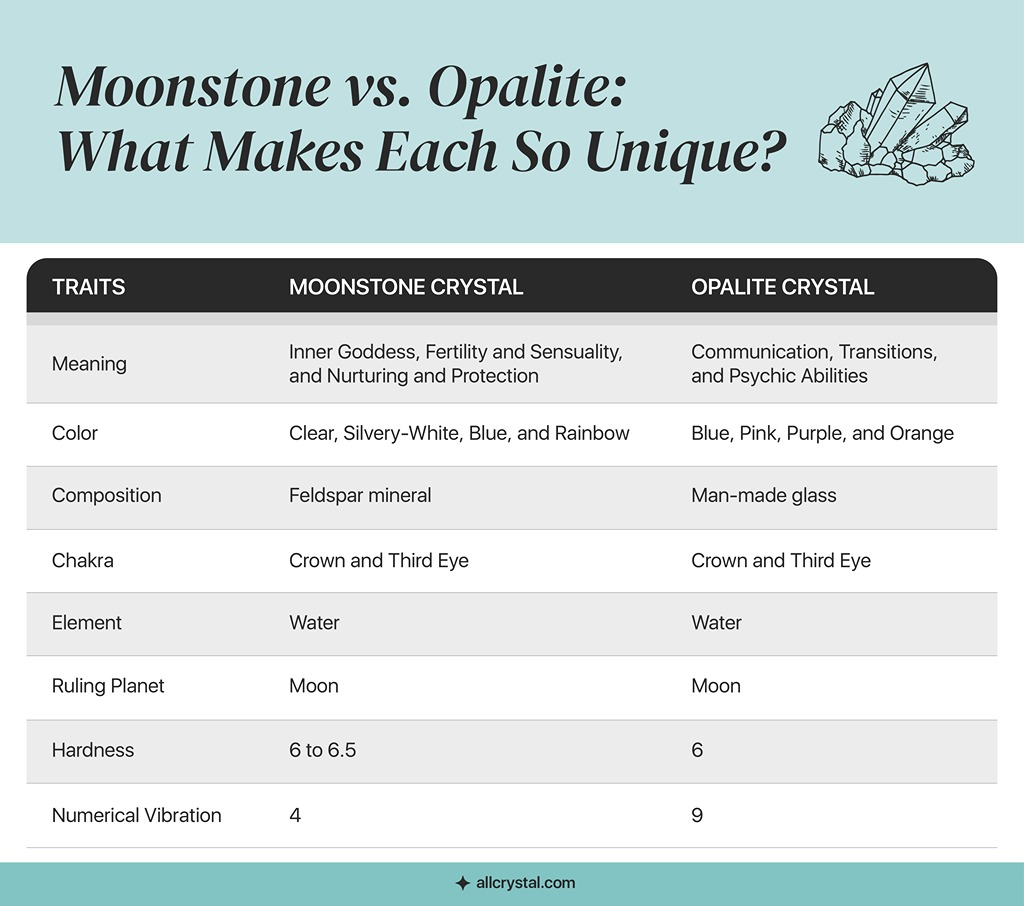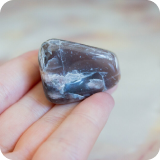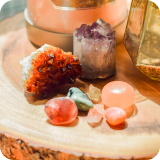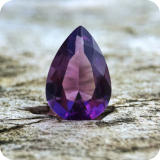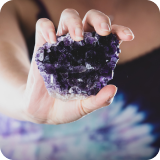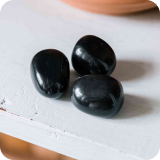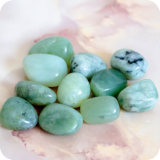- What is Moonstone Crystal?
- Moonstone Crystal Properties
- What is an Opalite Crystal?
- Opalite Crystal Properties
- 5 Similarities between Moonstone vs. Opalite
- 5 Differences between Moonstone vs. Opalite
- Moonstone vs. Opalite Crystal in Everyday Life
- Moonstone vs. Opalite Revealed by Experts
- Final Thoughts
Are you enthralled by Moonstone or Opalite? Choosing between them can often be daunting. Both gems look very similar but have distinct energy properties.
I’ve often seen a lot of Opalite gemstones being sold as Moonstone, and the reason for this is that Opalite is a cheaper alternative but bears the exact resemblance to Moonstone.
Understanding which crystal resonates more with your intentions or manifestations is important. Don’t fret, though. This article will dive deep into their secrets, making your journey of exploration fun!
What is Moonstone Crystal?
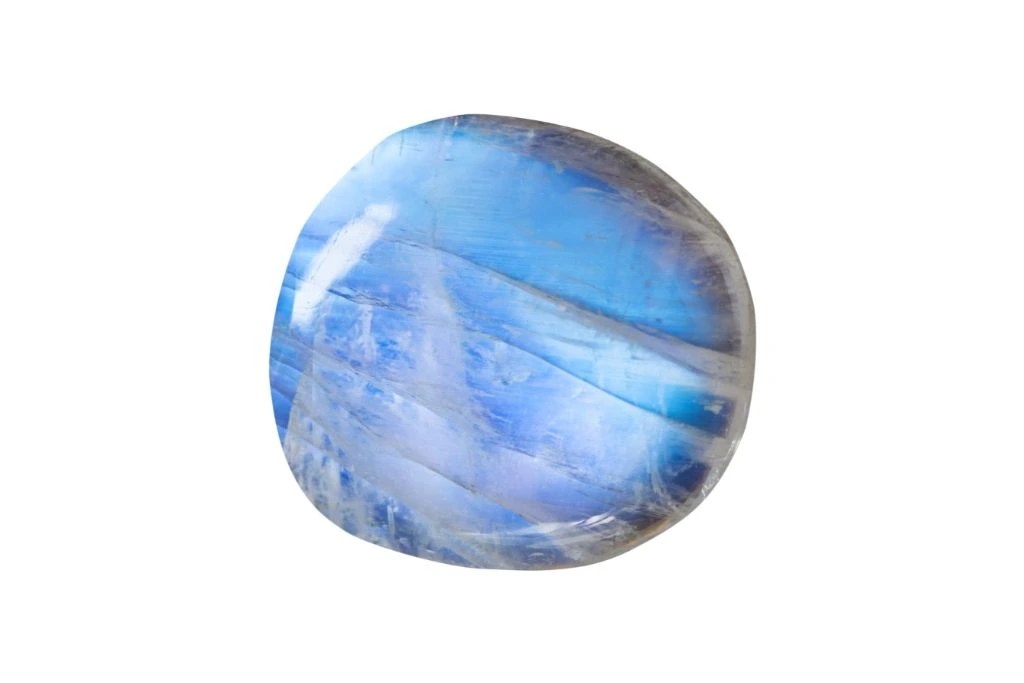
Moonstone is one of the best stones for teenagers because it helps them connect with and balance their emotions.
It enables you to connect with your inner goddess and increases fertility and sensuality. Its name is derived from a visual effect, or sheen, caused by light diffraction within a microstructure consisting of regular exsolution layers of Feldspar and Albite. It was first discovered in Sri Lanka.
Moonstone is a type of Feldspar mineral. This family of minerals makes up about 60% of the Earth’s crust. Moonstone gemstones feature a pearly and opalescent luster reminiscent of moonlight.
Colors range from clear to silvery-white; some even display beautiful blue or rainbow-like sheen. When rotated, Moonstone often shows gorgeous light patterns moving across its surface, an effect known as adularescence.
Moonstone has been used in jewelry by ancient civilizations. The Romans admired it, believing it originated from solidified rays of the Moon. It is one of the birthstones for June, along with Pearl and Alexandrite.
Moonstone is the official state gem of Florida to commemorate the moon landings, which the shuttle took off from Florida’s Kennedy Space Center. However, Moonstone isn’t naturally found in Florida.
Moonstone Crystal Properties
Moonstone is associated with stimulating the Crown Chakra, yet the Third Eye Chakra also benefits when using this stone. Moonstone gets its name from its ruling planet, the Moon.
Its connection to the Moon increases emotional awareness and a better understanding of your constantly changing emotional cycles. It belongs to the Water element, so its properties support intuitive thinking and fluidity of thoughts and emotions.
Moonstone sits between 6 and 6.5 on the Mohs hardness scale. Care must still be taken not to expose it to hard knocks or prolonged heat and sunlight exposure.
In numerology, 4 symbolizes stability, practicality, and a strong foundation. Moonstone stabilizes emotions, cultivates calmness, and promotes intuition. Its resonance with the number 4 makes it a powerful grounding stone that enhances the ability to approach life with a balanced perspective.
As for the Cancer zodiac sign, ruled by the Moon, there’s an instinctive bond with Moonstone. Cancers are known for their deep, emotional nature and nurturing tendencies. Moonstone, with its gentle, calming energy, offers emotional support and tranquility, deeply resonating with the Cancerian energy.
For an in-depth examination of Moonstone and its metaphysical properties, be sure to refer back to our article, Moonstone: Meaning, Properties, and Benefits You Should Know. You’ll gain detailed knowledge about all this gemstone offers.
What is an Opalite Crystal?
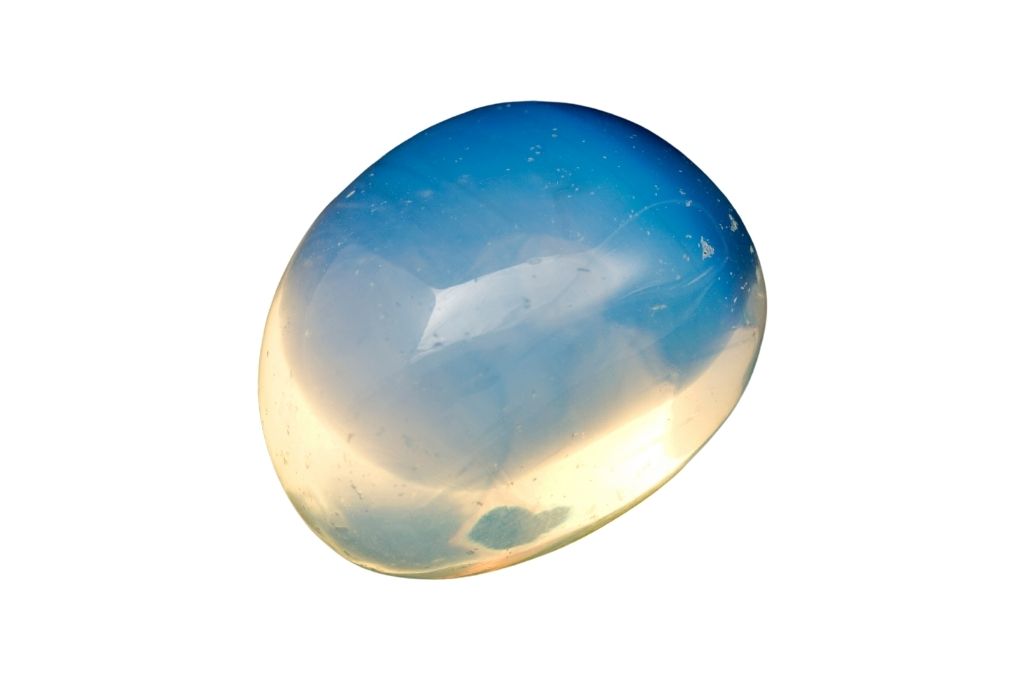
Opalite stands apart from many gemstones because it was created deliberately! Its production began around 1960.
Opalite is a synthetic form of glass designed specifically to imitate opalescence from genuine Opals. It is produced by melting silica at high temperatures before cooling it into a crystal.
Opalite is visually captivating, boasting vibrant hues that change depending on lighting conditions. It is semi-transparent. Many pieces have a mesmerizing blue glow when held against the light.
Under different light conditions, you might also observe pinks, purples, or orange hues playing across its surface. It has no inclusions or cracks, allowing its full radiance to shine.
Despite being artificial, it’s often used in meditation and has many metaphysical properties associated with it. Since Opalite is manufactured, it is more affordable than many other crystals.
Opalite Crystal Properties
Though synthetic, Opalite still packs powerful metaphysical qualities. Primarily associated with the Third Eye Chakra, it enhances psychic abilities and induces visions.
Opalite enhances mood, alleviates feelings of depression, and reduces fatigue. Its tranquilizing energy soothes nerves and offers serenity.
It is a transition stone, assisting in making smooth transitions and experiencing changes with a positive perspective. Its glowing translucence is reminiscent of the soft and calming light of the Moon. This connection offers a soothing, gentle energy, similar to the comforting presence of the Moon in the night sky.
The Cancer zodiac sign, ruled by the Moon, connects to Opalite. It instills a deeply emotional nature and nurturing tendencies.
Opalite’s connection with the number 9, a number of completion, wisdom, and spiritual enlightenment, gives it comforting energy that aids in embracing changes and letting go of the old to welcome the new with a hopeful perspective.
If you wish to gain more insight into Opalite, visit this article: Opalite: Meaning, Properties, and Benefits You Should Know.
5 Similarities between Moonstone vs. Opalite
Although Moonstone and Opalite each possess distinct origins and properties, their metaphysical benefits share striking resemblances. Let’s uncover five similarities these stones share.
Appearance: Moonstone and Opalite have distinctive luminescence and color-shifting effects. Each shows off soft hues, which change under various light conditions.
Energy: Both stones exude feminine energy and connect to the Moon, allowing you to access their nurturing qualities and soothing benefits.
Chakra Connection: Moonstone and Opalite both affect the Crown and Third Eye Chakras, which relate to intuition, spiritual awareness, and inner peace.
Emotional Healing: Both gemstones have powerful healing properties that affect the emotional body, which include helping balance emotions, reducing stress levels, and bringing peace and serenity.
Intuition: Moonstone and Opalite increase psychic abilities and are used for visions, dreams, and divination practices. They connect you with the divine and enhance your sense of “knowing.”
5 Differences between Moonstone vs. Opalite
Moonstone and Opalite share several similarities yet also showcase vital distinctions that set them apart. Here, I will explore five aspects that separate these gemstones.
Origin: Moonstone is an organic crystal formed over millions of years deep within the Earth. Opalite is a manufactured synthetic crystal produced in an artificial laboratory by humans.
Hardness: Moonstone scores 6 to 6.5 on Mohs’ hardness scale, while Opalite usually scores 6, but its hardness can vary due to the manufacturing process.
Timeframe: Opalite was recently invented by humans, making it a recent addition to the crystal world. On the other hand, Moonstone has been around for thousands of years and was used by ancient civilizations.
Numerological Vibration: Moonstone is associated with the number 4, symbolizing stability and practicality, while Opalite is linked with the numerology number 9, related to the end of a cycle and transitioning into a new phase.
Price: Moonstones may be priced around $10 to $30 per carat, while higher-quality Moonstone can cost up to several hundred dollars per carat. Opalite, being manufactured, is often much more affordable, and you can purchase a decent-sized piece for a few dollars.
Moonstone vs. Opalite Crystal in Everyday Life
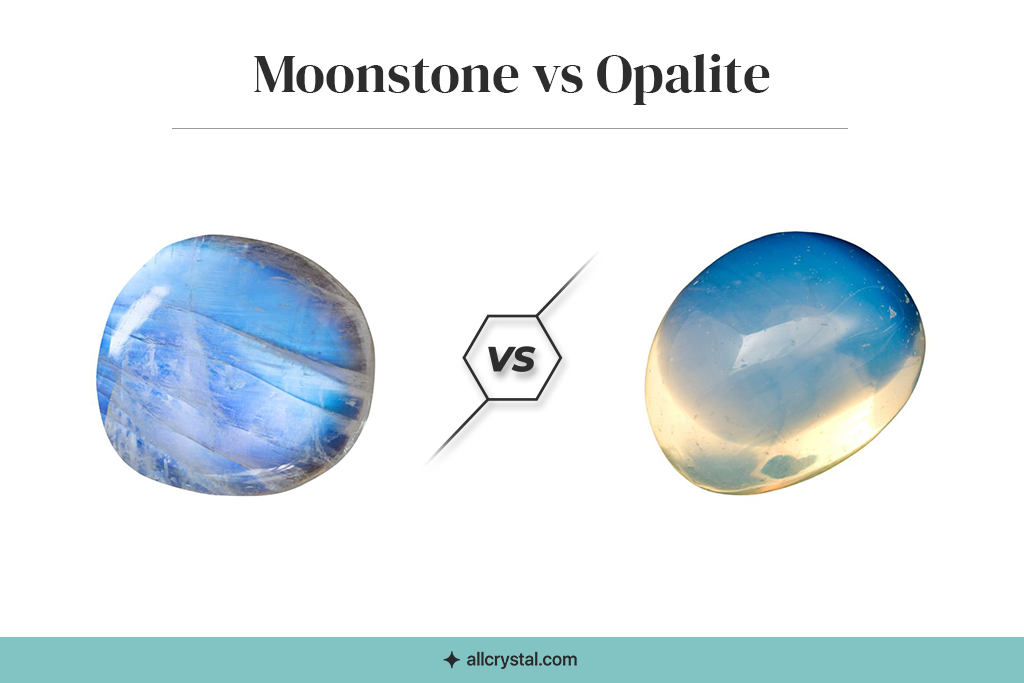
Moonstone’s soft, nurturing energy causes it to be often used in jewelry, such as pendants and rings. Its close link with the Moon makes it a great stone to incorporate for those seeking to better grasp their emotions and access greater emotional awareness. Opalite’s unique color-changing property makes it ideal for home decor.
Because Opalite can easily be manufactured in different sizes, it makes it easier to make carvings and decor out of it. Moonstone statues will be rather expensive in comparison!
Moonstone vs. Opalite Revealed by Experts
I believe that natural gemstones are always more powerful than manufactured stones. The energy and time that goes into creating a natural crystal is profound. This natural energy and the time it takes for a crystal to form naturally fills it with true high vibrational, divine power.
Some might argue with me as I say this, but I believe a gem created by nature has a much more intense divine connection than something created by man.
For this reason, Moonstone is far superior in aiding the healing process and helping bring spiritual awareness. Yes, Opalite can also have a positive impact, but the effect is far less recognizable than Moonstone’s.
Gemstone collectors value Moonstone much higher than Opalite, primarily due to its finite availability, compared to how Opalite can endlessly be manufactured.
Final Thoughts
While Moonstone is associated with intuition and feminine energy, and Opalite for its influence on communication and mental clarity, both crystals have much to offer. Combining the two can create a complementary energy, with Moonstone’s nurturing vibrations pairing well with Opalite’s clarity and refreshing energy.
